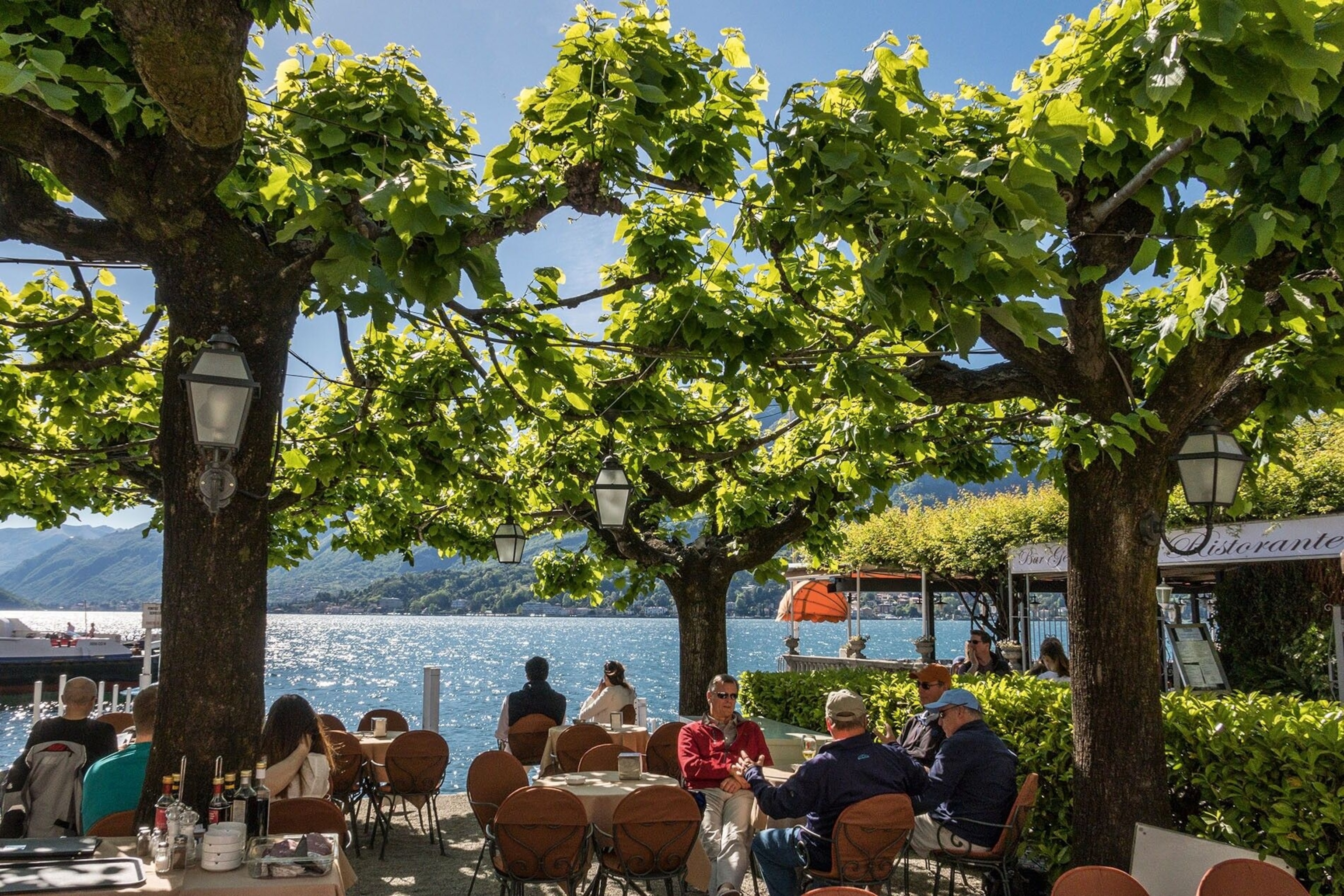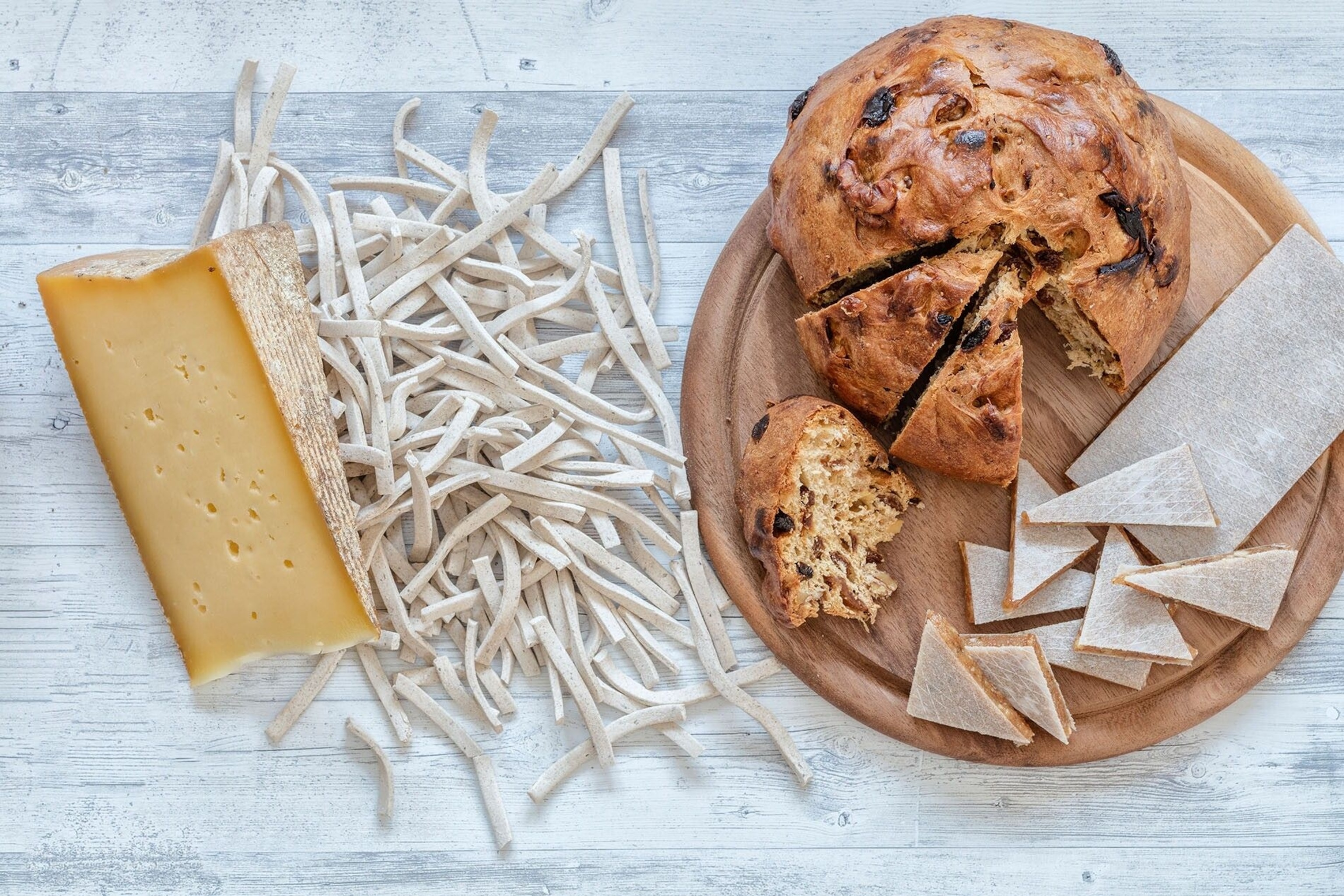
A culinary guide to Lombardy, Italy
Lombardy’s plethora of culinary offerings is one of its main draws. Here’s a look at some of the dishes — and people — that make the region a gastronome’s dream.
Between cities of world renown are breathtaking landscapes of river plains, lakes and mountains and a significant amount of agriculture. In the south, around Mantova and Cremona, is the ‘white belt’ of Lombardy, where rice, butter and cheese prevail. Heading north towards Milan, Brescia and Bergamo, the microclimate of the lakes allows olives and citrus fruit to thrive, and in Franciacorta is where you’ll find Italy’s best sparkling wine. Further north, the Valtellina valley is home to Alpine Nebbiolo wines and the hyper-local bresaola, an air-dried, salted beef.
When it comes to Lombard staples, think bollito misto (stew), cassoeula (pork and cabbage stew) and the world-famous risotto. For dessert, there’s sbrisolona, a crunchy almond cake synonymous with Mantua. Other big hitters from the region include mostarda (candied fruit syrup) and torrone (nougat), both from Cremona. For the turophile, there’s plenty of gorgonzola, grana padano and taleggio. To better understand what makes the cuisine so irresistible, let’s meet some of the people behind the dishes and ingredients.

Meet the chefs
Enrico ‘Chicco’ and Roberto ‘Bobo’ Cerea
DA Vittorio, Bergamo
Chicco and Bobo Cerea are the brothers behind Da Vittorio, a three-Michelin-star restaurant in Brusaporto, near Bergamo. Situated on beautiful grounds, the menu here consists of elevated and complex dishes, and the most frequently cited showstopper is a tomato and cheese pasta. Bobo says Chicco is better at theatrical “show cooking”, so chances are he’ll be the one mixing and dishing up for you. For all the pizzazz of fine dining, the duo insist that “simplicity is buonissima” and fondly remember guanciale and polenta from their childhoods. If you do eat here, be sure to save room for something from the beautiful bonbon trolley.
Grazia Omodei
Osteria della Villetta, Brescia
Grazia runs her brigade by cooking time-consuming, traditional dishes such as tripe, bollito and stoccafisso. She became a chef accidentally while working as a teacher, by occasionally assisting her mother-in-law in the kitchen. She’s rolled many cabbage involtini since then, determined to “preserve this way of cooking and socialising together”. Her approach is working. Even the great Alain Ducasse declared: “The food you eat here tells you that you can be nowhere else.” And the deified Gualtiero Marchesi was such a big fan of the polpette he counted Osteria della Villetta as one of his top 11 places in the world to eat.
Fernando Aldighieri
Locanda delle Grazie, Mantua
Fernando is a bundle of energy who runs a casual restaurant close to Mantua. In fact, he runs a lot, from his morning coffee to the fruit and veg market, from the local fishermen back to his kitchen to catch up with his wife, Daniela, who looks after front of house at their restaurant as well as their B&B. This is the kind of place where customers return time and time again for the homemade tagliatelle all’anatra (pasta with duck) or risotto alla pilota, traditionally made by rice millers, which Fernando loves so much, he “would even eat for breakfast”. When not cooking, he readily moves to the dining room, happily remembering, “I started off waiting tables.”
Alice Delcourt
Erba Brusca, Milan
This half-English, half-French chef who was raised in the USA is causing a stir in the gastronomic circles of Milan. Alice Delcourt cooks sublime food at Erba Brusca, the informal restaurant she co-owns with partner Danilo Ingannamorte, using ingredients that are good enough to “only need salt and olive oil”. The restaurant’s small vegetable garden inspires dishes like pea risotto with homemade pancetta, lemon and marjoram. One of the new generation of standout chefs in Lombardy, Alice supports local producers and although she may inventively include dukka and hummus, she’s a big fan of the region’s specialities, considering pizzoccheri “perfect as it is”.

Meet the producers
The winemaker: Cristina Ziliani
Berlucchi Franciacorta, Brescia
The story of Franciacorta’s rise is exceptional. Italy’s best fizz has only existed since the 1960s, and the idea was Franco Ziliani’s at the Berlucchi winery, now run by his daughter Cristina and her two brothers. Franciacorta (the word, like Champagne, refers to the zone, method of production and the final product) isn’t just for celebrating, but is drunk with most foods including fish, meat and cheese. So, how is life for a woman in the wine world? “Honestly, it’s been hard being the only woman in a wine family. Making my voice heard wasn’t easy. Once I could do that within my family, taking on the world was easy!”
The cheese champion: Paolo Ciapparelli
Storico Ribelle, Sondrio
There’s fresh cheese, there’s mature cheese, and then there’s Storico Ribelle. It can be matured for up to 10 years, but there are those who keep it for far longer. Made from 90% cow’s milk and 10% goat’s, the cheese is made in summer in the high pastures of the Morbegno valley. It wasn’t a cheesemaker, but a supporter, Paolo Ciapparelli, who ensured its continued existence. He fought to clarify Storico Ribelle’s differences and facilitate its sale — hence the creation of a dedicated centre in Gerola Alta. Buyers of a whole wheel can store their cheese in there for a nominal sum, and even visit for an annual photo with their purchase.
The rice grower: Pietro Schiavi
Riseria F.lli Schiavi Snc, Mantua
Lombardy’s love of rice is widely acknowledged. Travelling through the south, between Mantova and Pavia, lush paddy fields stretch out along the roadside, and amid the many large processing companies, some small rice mills still survive. Pietro Schiavi runs one that was founded in 1687. Nearby growers bring him their rice to be milled on a machine that was made in the 19th century, reputedly to a Leonardo da Vinci design. As always, the mill is run with a ‘no waste’ aim: removed husks become bedding for chickens and damaged grains are used for animal feed or remilled for rice flour.
Published in the Lombardy 2020 guide, distributed with the Nov/Dec 2020 issue of National Geographic Traveller (UK)
Subscribe to our newsletter and follow us on social media:
Twitter | Facebook | Instagram
You May Also Like
Go Further
Animals
- California brown pelicans are starving to death—despite plenty to eatCalifornia brown pelicans are starving to death—despite plenty to eat
- The world's largest fish are vanishing without a traceThe world's largest fish are vanishing without a trace
- We finally know how cockroaches conquered the worldWe finally know how cockroaches conquered the world
- Why America's 4,000 native bees need their day in the sunWhy America's 4,000 native bees need their day in the sun
- Crowdsourcing an anti-poaching movement in South Africa
- Paid Content
Crowdsourcing an anti-poaching movement in South Africa
Environment
- 2024 hurricane season forecasted to be record-breaking year2024 hurricane season forecasted to be record-breaking year
- Connecting a new generation with South Africa’s iconic species
- Paid Content
Connecting a new generation with South Africa’s iconic species - These images will help you see coral reefs in a whole new wayThese images will help you see coral reefs in a whole new way
- What rising temps in the Gulf of Maine mean for wildlifeWhat rising temps in the Gulf of Maine mean for wildlife
- He’s called ‘omacha,’ a dolphin that transforms into a man. Why?He’s called ‘omacha,’ a dolphin that transforms into a man. Why?
History & Culture
- I wrote this article with a 18th century quill. I recommend it.I wrote this article with a 18th century quill. I recommend it.
- Why this Bronze Age village became known as ‘Britain’s Pompeii’Why this Bronze Age village became known as ‘Britain’s Pompeii’
- These modern soldiers put Bronze Age armor to the testThese modern soldiers put Bronze Age armor to the test
- Should couples normalize sleeping in separate beds?Should couples normalize sleeping in separate beds?
- They were rock stars of paleontology—and their feud was legendaryThey were rock stars of paleontology—and their feud was legendary
Science
- Epidurals may do more than relieve pain—they could save livesEpidurals may do more than relieve pain—they could save lives
- Why the world's oldest sport is still one of the best exercisesWhy the world's oldest sport is still one of the best exercises
- What if aliens exist—but they're just hiding from us?What if aliens exist—but they're just hiding from us?
Travel
- This less crowded ancient temple in Laos rivals Angkor WatThis less crowded ancient temple in Laos rivals Angkor Wat
- Visit Rotterdam as it transforms itself into a floating cityVisit Rotterdam as it transforms itself into a floating city
- How to get off the beaten track in Northern LanzaroteHow to get off the beaten track in Northern Lanzarote






